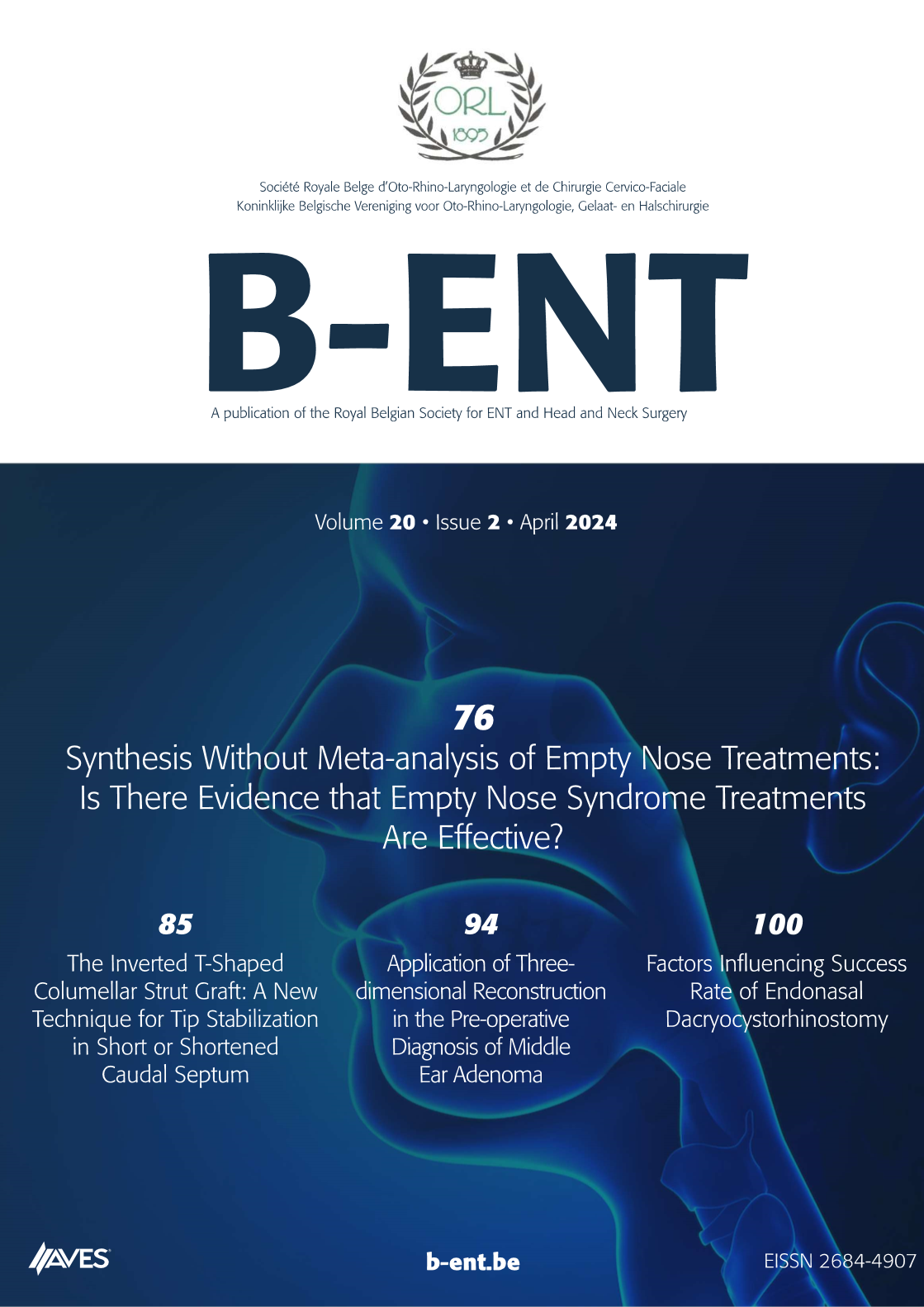Residual cholesteatoma revealed by endoscopy after microsurgery. Objective: To endoscopically examine common sites of residual cholesteatoma occurrence after microscopic ear surgery.
Methods: Thirty patients (15 men and 15 women; age range: 7–81 years) who underwent treatment for middle ear cholesteatoma (20 patients with pars flaccida cholesteatoma and 10 patients with pars tensa cholesteatoma) were selected. Following the removal of the cholesteatoma matrix via microscopy, residual matrix presence was assessed using an endoscope system. Additional resection was performed if the residual matrix was detected. Sites of residual matrix and their rates of incidence were then investigated.
Results: Residual matrix was observed in nine out of the 30 (30%) patients by endoscopy after microscopic surgery. Residual matrix was observed in eight out of the 20 (40%) patients with pars flaccida cholesteatoma and in one out of the 10 (10%) patients with pars tensa cholesteatoma. Residual matrix was observed in six out of the 14 (43%) patients who underwent canal wall up (CWU) tympanomastoidectomy and in three out of the 13 (23%) patients who underwent canal wall down (CWD) tympanomastoidectomy. Sites of residual matrix included the tegmen tympani in two patients, the medial scutal surface in three patients, the tympanic sinus in two patients and the anterior epitympanic recess in three patients. The risk of residual matrix was greater in patients with pars flaccida cholesteatoma than in those with pars tensa cholesteatoma. The attic, tympanic sinus and anterior epitympanic recess are common sites of residual cholesteatoma.
Conclusion: Endoscopy is advantageous for the assessment of residual cholesteatoma in hidden areas.



.png)
